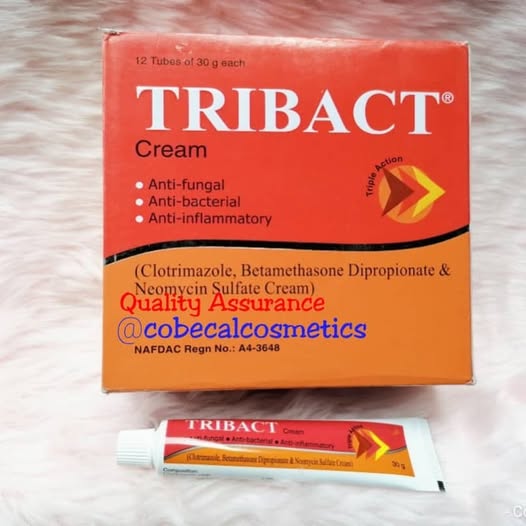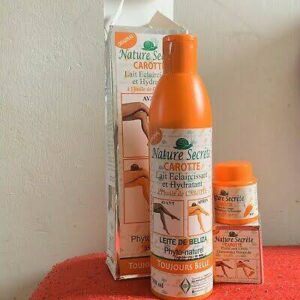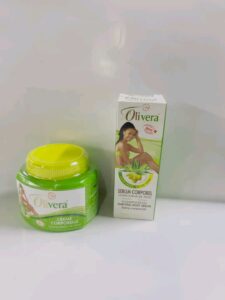Can I Use Tribact Cream On My Face? Everything You Need to Know”
What is Tribact Cream?
Tribact Cream is a multi-purpose topical medication that combines antifungal, antibacterial, and anti-inflammatory properties. It is commonly used to treat a range of skin conditions caused by fungal and bacterial infections, such as ringworm, eczema, and dermatitis. Its active ingredients, typically including clotrimazole, beclomethasone, and neomycin, work together to combat infections, reduce inflammation, and promote skin healing.
While Tribact Cream is effective for certain skin issues, using it on the face requires caution. The facial skin is more sensitive and prone to side effects like irritation, thinning, or discoloration, especially with prolonged use of steroids-containing creams. Understanding its safety and consulting a healthcare professional before applying it to the face is crucial to avoid potential complications and ensure the right treatment for specific skin concerns.
It is a powerful multi-action cream that works through the combined effects of its active ingredients.

Active Ingredients in Tribact Cream
1. Clotrimazole:
. An antifungal agent that combats fungal infections by disrupting the cell membrane of fungi, effectively stopping their growth.
. Commonly used to treat conditions like ringworm, athlete’s foot, and cacandidiasis. 2. Beclomethasone:
. A corticosteroid that reduces inflammation, redness, and itching.
. Helps to soothe irritated skin and control inflammatory responses.
3. Neomycin:
. An antibiotic effective against a wide range of bacteria.
. Prevents and treats bacterial infections by inhibiting the growth of bacteria on the skin.
Purpose of Tribact Cream
Tribact Cream is primarily used to manage:
. Fungal infections such as athlete’s foot, ringworm, and yeast infections.
. Bacterial infections that often accompany or worsen skin conditions.
. Inflammatory skin conditions like eczema or dermatitis, where redness, swelling, and itching are prominent.
By combining antifungal, antibacterial, and anti-inflammatory properties, Tribact Cream provides comprehensive treatment for mixed infections and inflammatory skin issues. However, its application should be done cautiously, especially on sensitive areas like the face, under the guidance of a healthcare provider.
Can Tribact Cream Be Used on the Face?
Tribact Cream can be used to treat certain skin conditions on the face, but its application on facial skin comes with specific concerns due to the sensitivity and thinness of the skin in this area.Here’s what you need to know:
Common Concerns About Using Tribact Cream on the Face
. Skin Sensitivity: The face is more prone to irritation, redness, and allergic reactions compared to other parts of the body. The steroid component (beclomethasone) in Tribact Cream can potentially lead to skin thinning, discoloration, or acne-like eruptions with prolonged use.
. Side Effects: Overuse or misuse on facial skin may result in issues like rosacea, perioral dermatitis (rash around the mouth), or worsening of existing skin problems.
Suitability for Specific Conditions
Fungal Infections: Tribact Cream may be suitable for treating fungal infections on the face, such as tinea (ringworm), but only under medical supervision.
Dermatitis and Eczema: In cases of severe inflammation or mixed infections, it may be prescribed for short-term use to reduce symptoms like redness and itching.
Acne or Cosmetic Concerns: It is not recommended for acne treatment or as a cosmetic cream due to the risk of adverse effects and worsening of acne.
Is It Safe to Use on the Face?
Short-Term Use: Tribact Cream may be safe for short-term application on the face for specific medical conditions when prescribed by a doctor.
Medical Guidance Required: Always consult a dermatologist before applying Tribact Cream to the face to ensure it is appropriate for your specific condition and to avoid potential complications.
In summary, while Tribact Cream can be beneficial for certain facial skin conditions, its use must be carefully managed. Prolonged or unsupervised application can lead to undesirable side effects, emphasizing the need for professional advice before use.
Benefits of Using Tribact Cream
Tribact Cream is a versatile medication with a combination of antifungal, antibacterial, and anti-inflammatory properties. Here are its key benefits and situations where it might be helpful:
Situations Where Tribact Cream Might Be Helpful
1. Treating mixed infections:
Ideal for skin conditions caused by both bacterial and fungal infections, as it addresses both simultaneously.
Examples include infected eczema or fungal rashes with secondary bacterial infection.
2. Reducing inflammation:
Effective in managing redness, swelling, and itching associated with inflammatory skin conditions such as dermatitis or severe allergic reactions.
3. Controlling fungal infections:
helps eliminate common fungal infections like ringworm, athlete’s foot, and yeast infections.
4. Wound Protection:
Prevents secondary bacterial infections in minor cuts, scrapes, or wounds in areas prone to fungal colonization.
5. Quick Symptom Relief:
Provides rapid relief from discomfort caused by itching, irritation, and inflammation, improving quality of life during treatment.
Addressing Common Misconceptions
1.”Tribact Cream Can Be Used for Acne”
Misconception: Many believe it can treat acne due to its anti-inflammatory properties.
Reality: It is not formulated for acne treatment and may worsen conditions like acne or rosacea.
2. “It’s Safe for Long-Term Use”
Misconception: Some assume it can be used indefinitely for recurring issues.
Reality: Prolonged use, especially due to the steroid component, can lead to side effects like skin thinning, stretch marks, and discoloration.
3. “It’s Suitable for All Skin Conditions”
Misconception: People might use it for unapproved conditions, such as dry skin or cosmetic concerns.
Reality: Its use should be limited to specific infections or inflammatory conditions as directed by a doctor.
4. “Tribact Cream Works as a Cosmetic Solution”
Misconception: Some users apply it to lighten skin or for cosmetic improvements.
Reality: This misuse can cause long-term skin damage and worsening of skin health.
Tribact Cream offers significant benefits in managing mixed infections and inflammatory skin conditions when used appropriately. However, understanding its correct application and limitations is crucial to avoid misuse and potential side effects. Always consult a healthcare provider to ensure its safe and effective use.
Risks and Side Effects of Using Tribact Cream
While Tribact Cream can be effective for treating certain skin conditions, its use, particularly on sensitive areas like the face, carries several risks. It is important to be aware of these potential side effects and use the cream as directed by a healthcare professional.
Potential Side Effects
1. Skin Thinning (Atrophy)
The corticosteroid component (beclomethasone) can cause thinning of the skin with prolonged use.
Thinned skin is more prone to tears, bruising, and slower healing.
2. Irritation and Allergic Reactions
Some users may experience redness, itching, burning, or worsening irritation upon application.
In rare cases, allergic reactions to the ingredients can occur.
3. Discoloration
Prolonged use of the cream may lead to hyperpigmentation (dark spots) or hypopigmentation (light spots), particularly on sensitive areas like the face.
4. Steroid-Induced Side Effects
Overuse can lead to conditions like steroid acne, rosacea, or perioral dermatitis (a rash around the mouth).
Systemic absorption of steroids, though rare, can occur, especially if used over large areas or on broken skin, leading to side effects like hormonal imbalances.
5. Increased Risk of Infection
Long-term use of the steroid can suppress the skin’s natural immune defenses, making it more susceptible to infections.
6. Resistance Development
Misuse or overuse of the antibiotic (neomycin) can lead to antibiotic resistance, making future bacterial infections harder to treat.
The Importance of Avoiding Prolonged Use
Medical guidance is key: Tribact cream should only be used for the duration recommended by a doctor, typically for short-term treatment.
Risk of Overuse: Prolonged or frequent application increases the risk of side effects, especially in delicate areas like the face.
Avoid Self-Medication: Using it without a clear diagnosis or for unapproved purposes, such as cosmetic improvement or acne treatment, can cause long-term harm.
While Tribact Cream is a powerful medication for certain conditions, its potential risks highlight the need for careful, limited use. Always follow your healthcare provider’s instructions to ensure safe and effective treatment. If you experience any side effects, discontinue use and seek medical advice immediately.
Precautions and How to Use Tribact Cream
To ensure the safe and effective use of Tribact Cream, it’s essential to follow proper application methods and adhere to specific precautions. Here’s a guide:
Proper Application Methods for Safety
1. Consult a doctor first.
Always seek medical advice to confirm the cream is appropriate for your condition.
2. Clean and dry the affected area.
Wash the area gently with mild soap and water. Pat it dry before applying the cream to ensure optimal absorption.
3. Apply a thin layer.
Use a small amount of the cream and spread it evenly over the affected area. Avoid over-application, as it won’t enhance effectiveness and may increase side effects.
4. Avoid contact with eyes and mouth.
Do not apply the cream near the eyes, nose, or mouth to prevent irritation or absorption into sensitive areas.
5. Wash Hands After Use
– Clean your hands thoroughly after applying the cream to avoid unintentional spread to other areas or people.
6. Use Only for the Prescribed Duration
Typically, Tribact Cream is recommended for short-term use (7–14 days). Prolonged use can lead to side effects like skin thinning or discoloration.
7. Do Not Cover with Bandages
Unless advised by a doctor, avoid covering the treated area with airtight dressings, as this can increase absorption and side effects.
Precautions to Keep in Mind
Do Not Use on Open Wounds: Avoid applying the cream on broken or severely damaged skin.
Monitor for Side Effects: Watch for irritation, redness, or worsening of symptoms, and discontinue use if these occur.
– Avoid Prolonged Sun Exposure: Treated areas may be more sensitive to sunlight, so use sunscreen or protective clothing when outdoors.
Not for Preventative Use: Do not use the cream as a preventive measure or for cosmetic purposes.
Alternatives for Common Skin Concerns
1. Acne
Recommended Products: Use non-comedogenic products containing salicylic acid, benzoyl peroxide, or retinoids.
Example Alternatives: Over-the-counter acne treatments like Differin Gel or dermatologist-prescribed medications.
2. Cosmetic skin concerns (e.g., dark spots, wrinkles)
Recommended Products: Opt for vitamin C serums, hyaluronic acid, or niacinamide-based creams for skin brightening and hydration.
Example Alternatives: Products like CeraVe, The Ordinary, or La Roche-Posay tailored to specific skin needs.
3. General skin inflammation or irritation
Recommended Products: Use soothing agents like aloe vera gel or creams with colloidal oatmeal for mild irritation.
Example Alternatives: Aveeno Soothing Cream or Eucerin Anti-Redness.
Using Tribact Cream properly and for the right conditions is crucial to avoid risks and maximize its benefits. For non-infectious or cosmetic skin concerns, safer alternatives are available that can address specific needs without the risks associated with corticosteroids or antibiotics. Always prioritize a dermatologist’s guidance for tailored treatment options.
Alternatives to Tribact Cream for Facial Use
Using Tribact Cream on the face can pose risks due to its steroid and antibiotic components, which are not always suitable for the sensitive facial skin. For facial skin issues, safer, dermatologist-approved alternatives are available. Here are some recommendations based on specific concerns:
1. For acne and pimples
Recommended Products:
Benzoyl Peroxide Creams: Help reduce acne-causing bacteria and prevent breakouts.
Example: PanOxyl Acne Foaming Wash (4% or 10%)
Salicylic Acid Creams or Gels: Unclog pores and reduce inflammation.
Example: The Ordinary Salicylic Acid 2% Solution
Adapalene Gel (retinoid): Promotes skin turnover and prevents clogging.
Example: Differin Gel (OTC retinoid)
Why These Are Safer: These products target acne directly without the risks of steroids or antibiotics, making them suitable for long-term use.
2. For fungal infections
Recommended Products:
Clotrimazole Cream: Targets fungal infections without the added steroid component.
Example: Lotrimin AF Antifungal Cream
Ketoconazole Cream: Effective for fungal infections like seborrheic dermatitis.
Example: Nizoral Topical Cream
Why These Are Safer: These antifungal creams specifically target fungal infections without additional risks to facial skin.
3. For eczema or dermatitis
Recommended Products:
Hydrocortisone Cream (Low Strength): A mild corticosteroid suitable for sensitive areas, including the face, for short-term use.
Example: Cortizone-10 Cream
Moisturizers for Sensitive Skin: Strengthen the skin barrier and reduce inflammation.
Example: CeraVe Moisturizing Cream or Aveeno Eczema Therapy
Why These Are Safer: Low-potency steroids or non-steroidal moisturizers are effective for reducing inflammation and soothing the skin.
4. For hyperpigmentation or scarring
Recommended Products:
Vitamin C Serums: Brighten the skin and reduce dark spots.
Example: TruSkin Vitamin C Serum
Niacinamide Creams: Improve uneven skin tone and soothe irritation.
Example: The Ordinary Niacinamide 10% + Zinc 1%
Azelaic Acid Creams: Targets pigmentation and mild acne.
Example: The Ordinary Azelaic Acid Suspension 10%
Why These Are Safer: These products are non-irritating and formulated for safe, daily use on facial skin.
5. For general skin sensitivity or redness
Recommended Products:
Soothing moisturizers: provide hydration and reduce redness.
Example: La Roche-Posay Toleriane Ultra Cream
Aloe Vera Gel: A natural alternative for soothing irritated skin.
Example: Nature Republic Aloe Vera Gel
Why These Are Safer: They avoid active ingredients that can exacerbate sensitivity and focus on restoring skin health.
Tribact Cream is not the first choice for facial application due to its potential risks. Safer, dermatologist-recommended products designed for specific concerns are widely available and more appropriate for the sensitive skin of the face. Always consult a dermatologist to select the best alternative based on your skin type and condition.
Conclusion
While Tribact Cream can be effective for treating specific skin conditions, its use on the face requires caution due to the sensitive nature of facial skin and the potential for side effects like irritation, thinning, and discoloration. For many facial skin concerns, there are safer, dermatologist-recommended alternatives available.
To ensure the best outcomes and protect your skin’s health, always consult a dermatologist before using Tribact Cream on your face. Professional guidance will help you choose the right treatment for your condition while minimizing risks and promoting long-term skin health.




